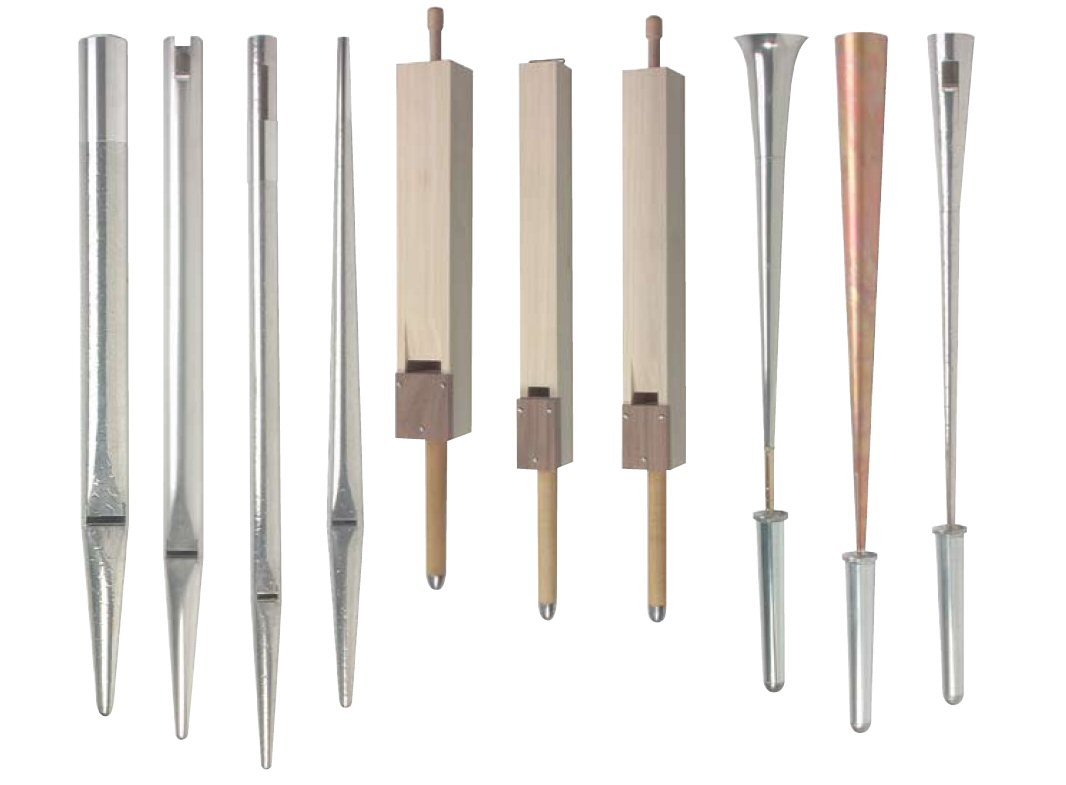
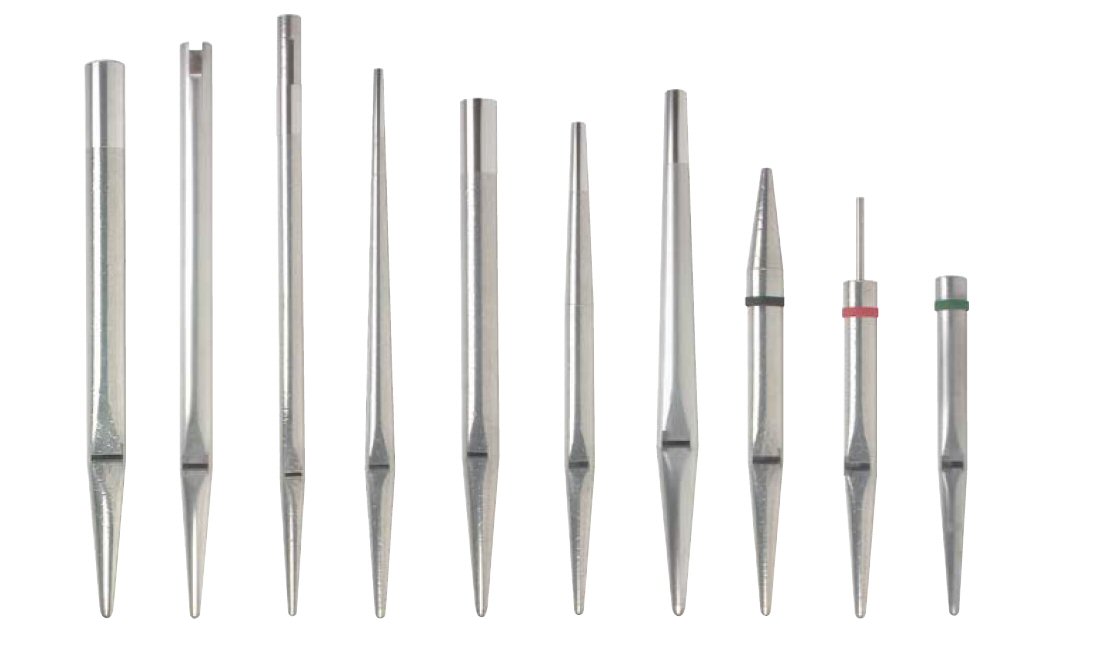
THE DESIGN AND OPERATION OF ORGAN PIPES
This illustration, from the
catalog of America's most recognized builder of organ parts, Organ Supply
Industries, Inc. of Erie, Pa., demonstrates that there are many different
types of organ pipes. The materials used to build organ pipes are quite
varied too. Ranging from alloys of tin, lead and rare metals, to various
types of wood and even copper, the distinctive sounds of the organ's ranks
are the product of not only shape and design, but also the result of the
material which makes up the pipe. |
 |
 |
(FLUE PIPES)
The scientific principles behind
the operation of organ pipes are deeply rooted in physics.
. For centuries, musicians, builders and scientists have sought
to define the various mathematical and spacial relationships between
notes and the physical devices used to produce them. Pipe making has
been refined to an exact science, but the final tonal result remains
in the hands of the tonal finisher who is responsible for the ultimate
cumulative sound of the organ's ranks. |
|
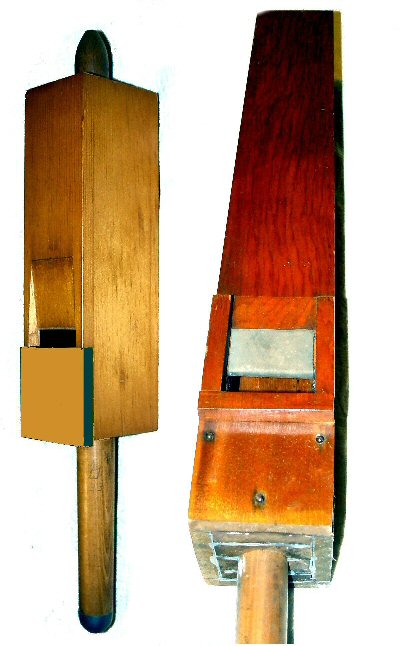 |
|
EXAMPLES OF STOPPERED WOODEN
FLUE PIPES. |
|
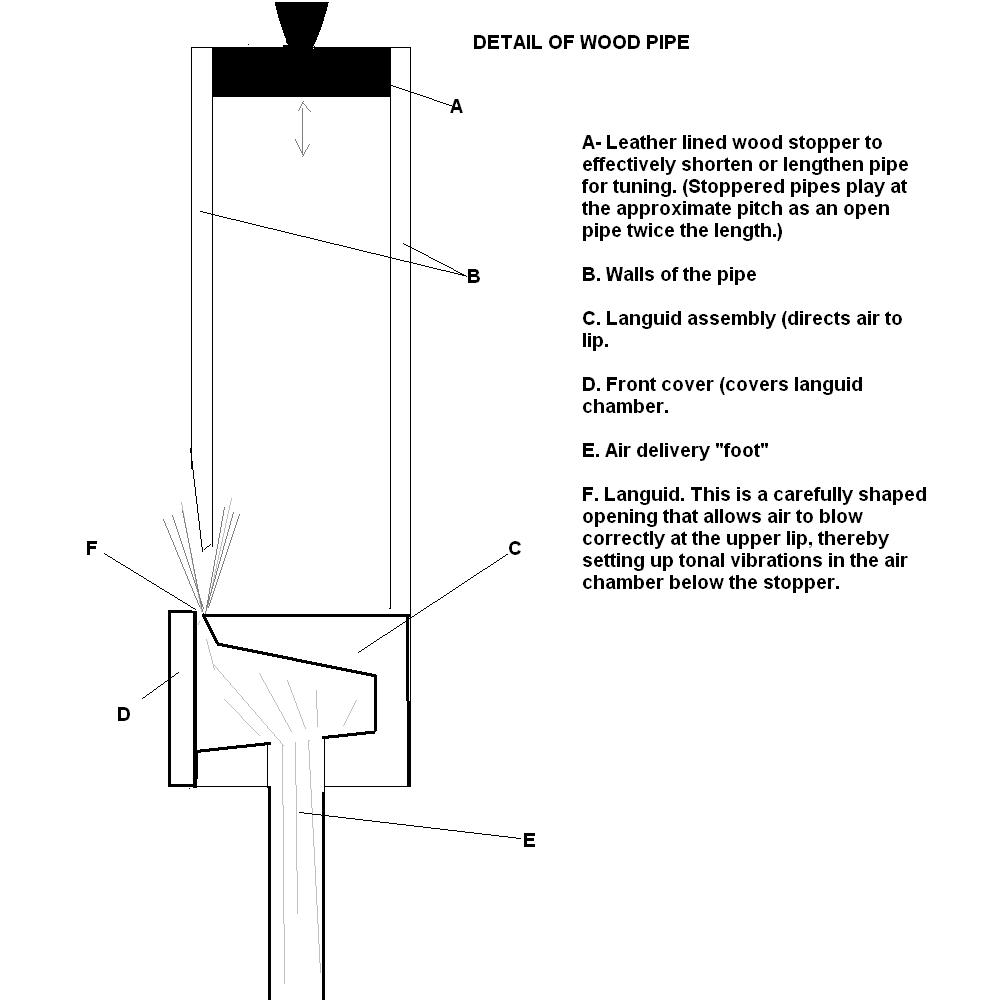 |
|
METAL
FLUE PIPE EXAMPLES |
|
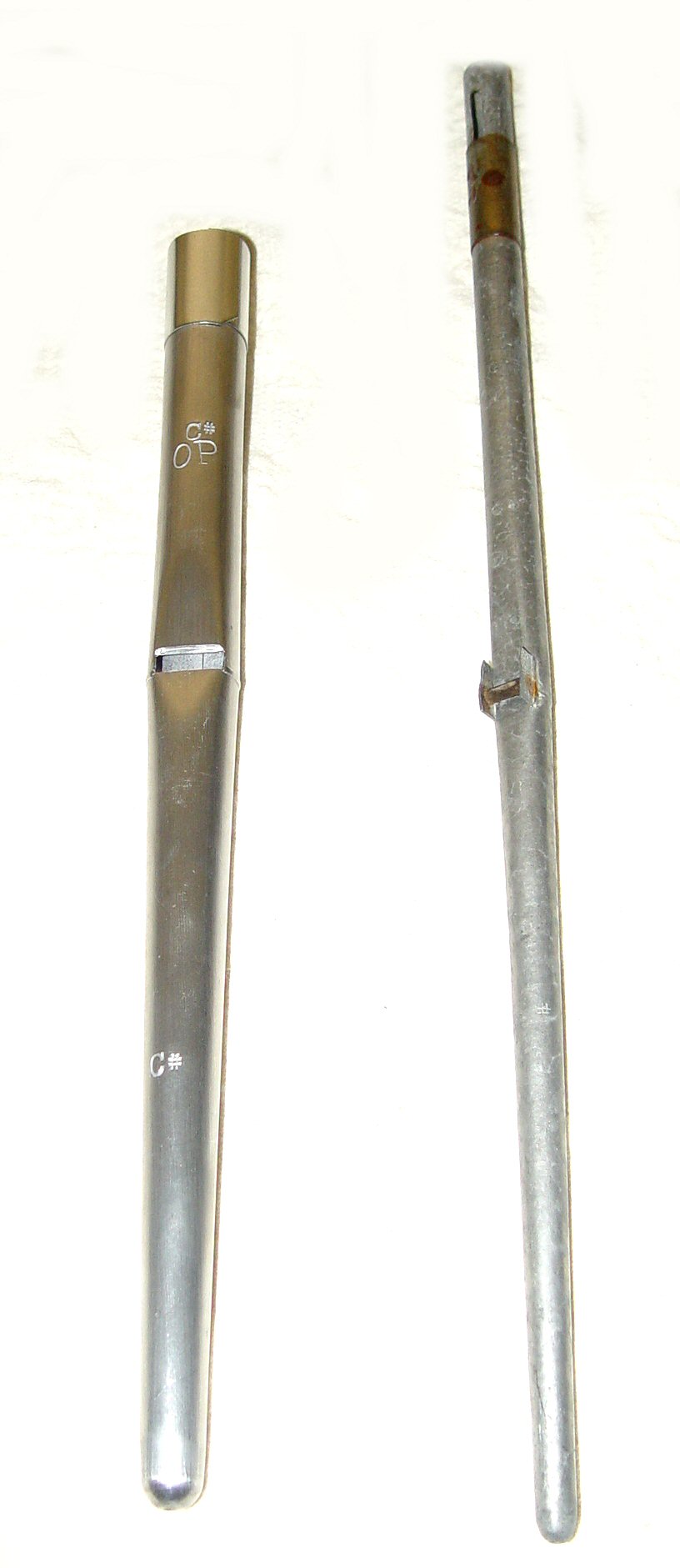 |
|
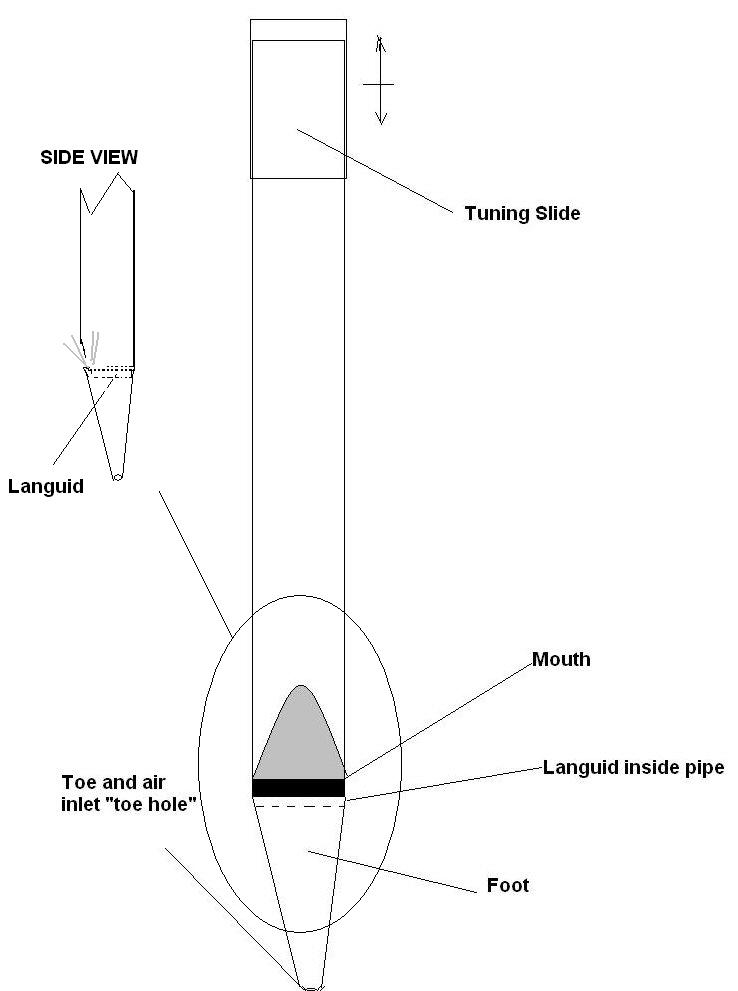 |
|
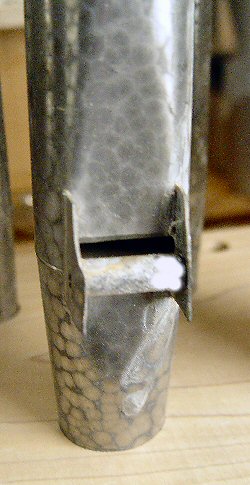 |
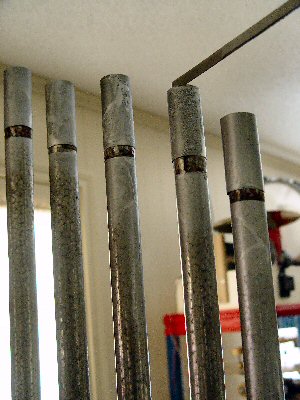 |
(LEFT) Note the round dowel stretched across the mouth of this string flue pipe. This is an example of a "beard" which serves to alter the harmonic structure of the sound by directing escaping air, from the languid flue opening, back up onto the upper lip. On larger pipes, it is also a common practice to install "barn doors" which are the two metal strips soldered on either side of the mouth. These strips can be bent together or apart, and are used to regulate the speech of the pipe in cases where the area of the mouth is so large that speech may become irregular or unstable. (RIGHT) The organ technician uses a tuning hammer to bring a pipe into tune. The hammer is used to tap the tuning sleeve into the correct position to give the pipe exactly the correct effective length for the note desired. The tuning hammer, which is fashioned from a heavy piece of stainless steel flatbar, has a knife-like edge on one end. This special edge is used to raise the sleeve without scratching or scoring the wall of the pipe. |
|